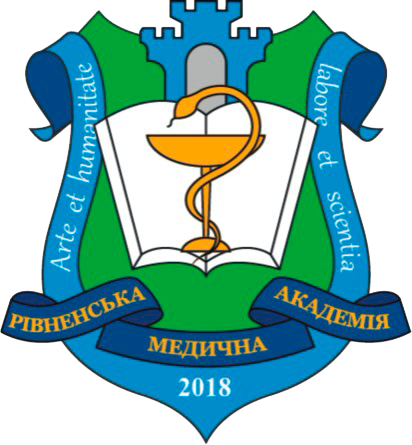ANTI-ATHEROSCLEROSIS EFFECT OF THE HERB SPERANSKIA TUBERCULATA (BUNGE) BAILL
DOI:
https://doi.org/10.32782/health-2024.2.18Keywords:
Speranskia Tuberculata, atherosclerosis, RAW 264.7, oil red O staining, oxidised low-density lipoprotein, flow cytometry.Abstract
The article describes the inhibitory effect of extracts of the herb Speranskia Tuberculata (Bunge) Baill on atherosclerosis of vessels. Crude extracts were prepared using petroleum ether (PE extracts). Subsequently, the dried extracts were dissolved in dimethyl sulfoxide to prepare working solutions with 12.5 to 75 μg/mL concentrations. RAW 264.7 cells, a macrophage cell line, were used as the research object. Atherosclerosis was induced in the cells by incubating oxidised low-density lipoproteins. The study of the influence of PE extract concentration was carried out in two experiments. The first included oil red O staining on macrophages with different concentrations of PE extract added, followed by a spectrophotometric examination of the solutions. Thus, the effect of PE extract concentration on lipid content in cells was investigated. The second method was based on flow cytometry and ended by measuring the intensity of fluorescent cholesterol in the cells of various samples. Cell samples additionally containing only oxidised low-density lipoproteins, as well as cells treated with PE extract and caffeic acid, were compared. PE extracts of Speranskia Tuberculata (Bunge) Baill effectively inhibit the transition from macrophages to foam cells, as shown by labelling foam cells with neutral fat using Oil red O staining. The processes of cholesterol uptake by macrophages were investigated by flow cytometry using fluorescently labelled cholesterol. PE extract minimises cholesterol deposition in macrophages by inhibiting macrophage phagocytosis of cholesterol while promoting the effect of intracellular cholesterol outflux. Thus, the role of PE extracts in regulating the cholesterol balance in macrophages and inhibiting the transformation of macrophages into foam cells has been experimentally proven. Possible mechanisms for realising these effects are proposed.
References
Gupta K.K., Ali S., Sanghera R.S. Pharmacological Options in Atherosclerosis: A Review of the Existing Evidence. Cardiology and Therapy. 2019. Vol. 8. № 1. P. 5–20. DOI: https://doi.org/10.1007/s40119-018-0123-0.
Bergheanu S. C., Bodde M.C., Jukema J.W. Pathophysiology and treatment of atherosclerosis. Netherlands Heart Journal. 2017. Vol. 25. P. 231–242. DOI: https://doi.org/10.1007/s12471-017-0959-2.
Song L., Zhang J., Lai R., Li Q., Ju J., Xu, H. Chinese Herbal Medicines and Active Metabolites: Potential Antioxidant Treatments for Atherosclerosis. Frontiers in Pharmacology. 2021. Vol. 12. P. 675999. DOI: https://doi.org/10.3389/fphar.2021.675999.
Zhi W., Liu Y., Wang X., Zhang H. Recent advances of traditional Chinese medicine for the prevention and treatment of atherosclerosis. Journal of Ethnopharmacology. 2023. Vol. 301. P. 115749. DOI: https://doi.org/10.1016/j.jep.2022.115749.
Wang C., Niimi M., Watanabe T., Wang Y., Liang J., Fan J. Treatment of atherosclerosis by traditional Chinese medicine: Questions and quandaries. Atherosclerosis. 2018. Vol. 277. P. 136–144. DOI: https://doi.org/10.1016/j.atherosclerosis.2018.08.039.
Pawelzik S.-C., Bäck M. Eastern Remedies for Western-type diet induced atherosclerosis. Annals of Translational Medicine. 2020. Vol. 8. № 6. P. 258. DOI: https://doi.org/10.21037/atm.2020.03.39.
Zhou Y.X., Wang S.J., Li Y., Xia W., Meng X.Y., Peng C., Zhang H. Evaluation of analgesic, anti-inflammatory and antipyretic activities of the ethanol extract from Speranskia tuberculate. African Journal of Traditional, Complementary and Alternative Medicines. 2015. Vol. 12. № 3. P. 49–54. DOI: https://doi.org/10.4314/ajtcam.v12i3.6.
Kim G., Gan R.-Y., Zhang D., Farha A.K., Habimana O., Mavumengwana V., Li H.-B., Wang X.-H., Corke H. Large-Scale Screening of 239 Traditional Chinese Medicinal Plant Extracts for Their Antibacterial Activities against Multidrug-Resistant Staphylococcus aureus and Cytotoxic Activities. Pathogens. 2020. Vol. 9. № 3. P. 185. DOI: https://doi.org/10.3390/pathogens9030185.
Zeyuan Sun, Derkach T.M. Biologically active compounds in the extracts from the Speranskia Tuberculata (Bunge) Baill herb and their effect on the viability of cancer cells of five different lines. Pharmaceutical Review. 2024. №1. P. 23–34. DOI: https://doi.org/10.11603/2312-0967.2024.1.14441.
Wang Y., Kaur G., Kumar M., Kushwah A.S., Kabra A., Kainth R. Caffeic Acid Prevents Vascular Oxidative Stress and Atherosclerosis against Atherosclerogenic Diet in Rats. Evidence-based Complementary and Alternative Medicine. 2022. P. 8913926. DOI: https://doi.org/10.1155/2022/8913926.
Sun R., Wu T., Xing S., Wei S., Bielicki J.K., Pan X., Zhou M., Chen J. Caffeic acid protects against atherosclerotic lesions and cognitive decline in ApoE−/− mice. Journal of Pharmacological Sciences. 2023. Vol. 151. № 2. P. 110–118. DOI: https://doi.org/10.1016/j.jphs.2022.12.006.
Pavlíková N. Caffeic Acid and Diseases—Mechanisms of Action. International Journal of Molecular Sciences. 2023. Vol. 24. № 1. P. 588. DOI: https://doi.org/10.3390/ijms24010588





